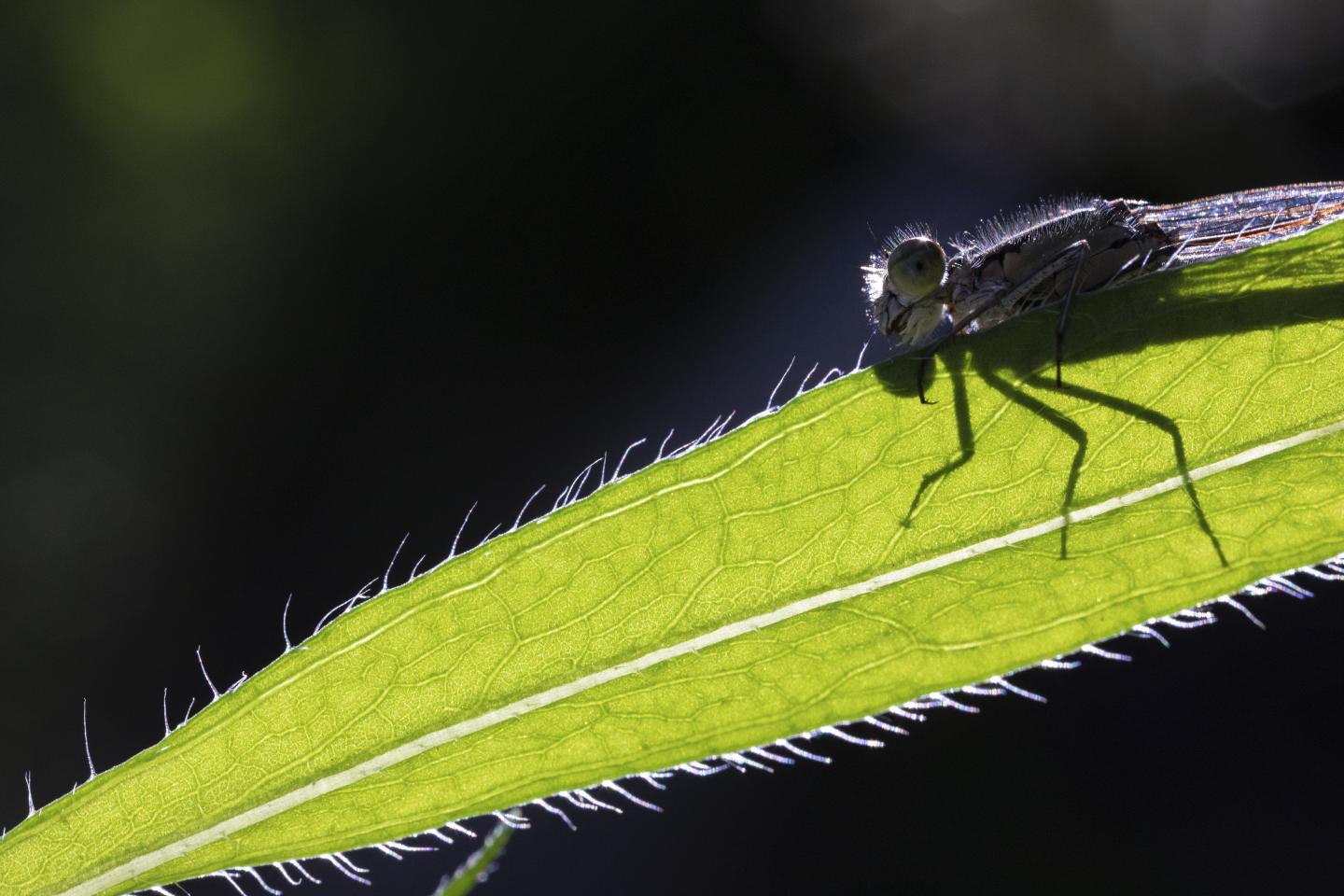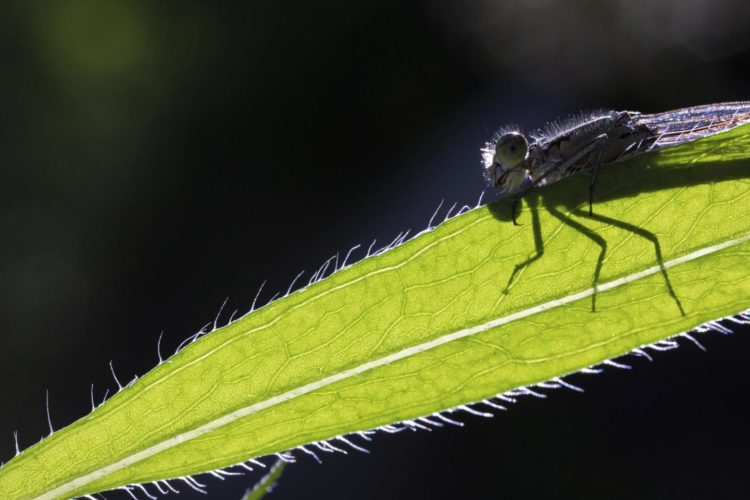They consume hundreds of thousands of insects in a small area

Credit: Photo: Kari Kaunisto, University of Turku
A study led by the University of Turku, Finland, has found that small, fiercely predatory damselflies catch and eat hundreds of thousands of insects during a single summer – in an area surrounding just a single pond. In terms of weight, this equates to a total prey mass of just under a kilo. Dragonflies mostly catch different kinds of midges, but also large numbers of other insects.
Who keeps numbers of insect in check during the summer? This has been debated for some time, but a clear answer has remained elusive, as it has been difficult to monitor the numbers consumed by different insect predators. A new study now sheds light on the role of dragonflies that occur in large numbers.
Even in just a small area, populations of matchstick-sized damselflies that whiz around, consume hundreds and thousands of insects. Although the numbers of prey species individuals hatching in the area is as much as one hundred times the quantities being consumed by the damselflies, the quantity consumed is nevertheless significant because there are many other predators also preying on the same prey species.
The results of the novel study were obtained by combining multiple scientific methods. The prey species of the dragonflies and their relative quantities were assessed by examining prey DNA extracted from the faeces of damselflies, using a method known as metabarcoding. Population estimates of dragonflies were also obtained.
– We investigated the numbers of dragonflies by marking them with a series of numbers on their wings, releasing them and then catching them again. By comparing the numbers of marked and unmarked dragonflies caught, we were able to estimate the total number of individuals in the area. The numbers of insects consumed, meanwhile, were estimated by covering certain areas with tent-like hatching traps and counting how many insects accumulated in them over a particular surface area, explains Senior Researcher Kari Kaunisto from the Biodiversity Unit of the University of Turku, who led the study.
Chironomids are damselflies’ favourite food
Dragonflies are among the apex predators of the insect world and are considered to be responsible for regulating the numbers of many other insect species. During the period studied, the insect species consumed the most by the damselflies were different chironomids.
– In the 12-hectare area we studied, the catch mass for the four species of dragonflies was about 900 grams, equivalent to about 700,000 medium-sized midges. This equated to around 1% of the total mass of the midge populations in the area. This amount should not, however, be disregarded, as damselflies are by no means the only predators of midges and other insects. The area we are studying has an enormous number of other predators, including twenty other species of dragonfly, as well as birds and bats, explains Docent of Molecular Ecology Eero Vesterinen from the Biodiversity Unit of the University of Turku, who was responsible for the project’s DNA analyses.
Dragonflies have always fascinated people, as they are impressive insects and effective predators. Dragonflies are also particularly at risk because they are apex predators in natural ecosystems.
– In this study, we focused on four small but locally abundant damselfly species from among the 62 dragonfly species found in Finland, Vesterinen adds.
The species studied were the common blue damselfly (Enallagma cyathigerum), the northern damselfly (Coenagrion hastulatum), the Irish damselfly (Coenagrion lunulatum), and the variable damselfly (Coenagrion pulchellum).
New information on natural food web functions
Understanding the functioning of the food webs is particularly important now, when natural diversity is diminishing at an accelerating rate.
– For the first time, our study examined the intensity of insect hunting in relation to the total number of insects being preyed on. The collapse of insect populations reduces the amount of food available to dragonflies, but it has not been possible to assess the impacts of predation by dragonflies without this accurate information on food chains, says Kaunisto.
Professor Tomas Roslin from the Swedish University of Agricultural Sciences, who participated in the study, is really excited about the new approach and the interesting results of the study.
– By combining several methods, the research reveals the overall impact of predation in nature. We succeeded in revealing both the wide range of insects preyed on by dragonflies and the significance of predation in relation to both individual prey species as well as the community as a whole, Roslin exclaims.
###
Media Contact
Kari Kaunisto
[email protected]
358-407-401-653
Original Source
https:/
Related Journal Article
http://dx.





